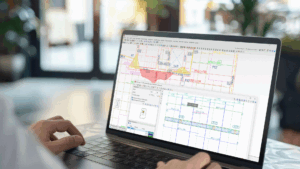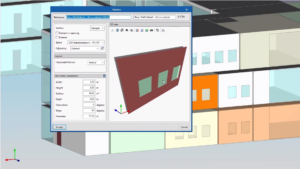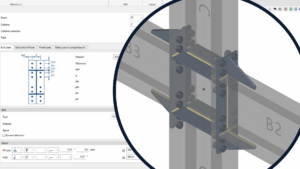Open BIM Analytical Model is a tool that can be used to improve interoperability between programs from different developers, especially in cases where BIM models are created for energy simulations and acoustic checks.
Up until a few years ago, with the state of the IFC standard and within the field of thermoacoustic studies, not all the parameters needed for a complete analysis could be transferred from one computer program to another in interoperable operations. In some cases, some manual adjustments had to be made in the program importing the architectural geometry in order to generate an accurate analytical model.
Our program for creating analytical geometric models Open BIM Analytical Model prevents these problems, as it interprets BIM models in IFC format from different modelling programs and, after entering some simple parameters in the architectural model in IFC (such as the basic characterisation of the building elements and the definition of the rooms), it can generate an accurate analytical model adjusted to the requirements of the different simulations.
Let's take a look at some of the tool's main features.
Multiple analytical models for a single BIM model
The same architectural model may require different layouts or groups of spaces to meet the regulatory criteria of each discipline. For example, an analytical model created for an acoustic simulation requires a different grouping of spaces than would be established for an energy simulation.
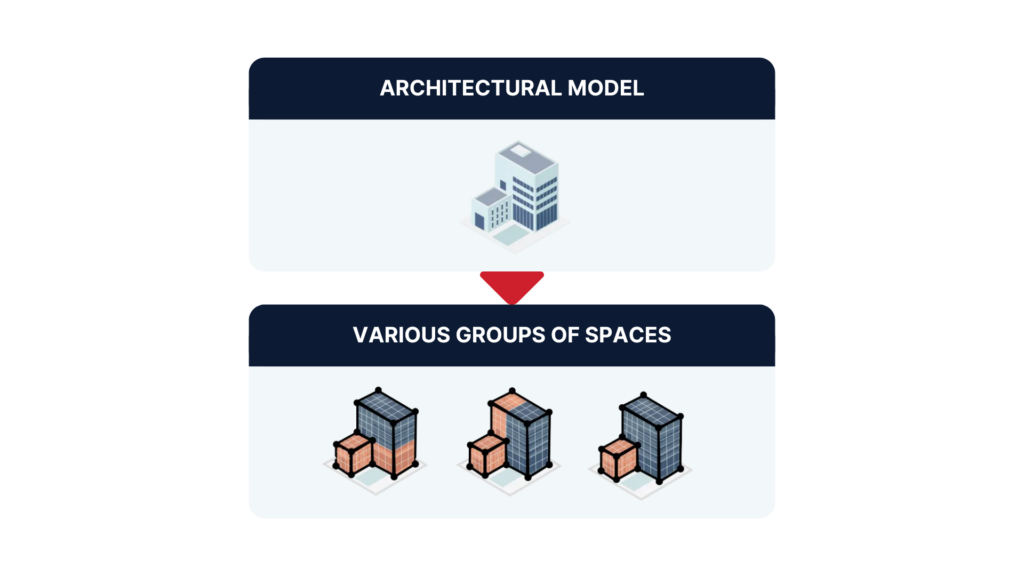
The solution used was to work on the architectural model up to a certain level of project development and then duplicate the model. In the duplicated models, the spaces were grouped according to the different needs in order to be able to carry out the different simulations in the next step. This can be avoided by using the Open BIM Analytical Model, as the identification of the environment in the modelling program alone generates sufficient data to create multiple groups of spaces for different simulations.
Identifying edges
Simulations that rely on detailed edge analysis, such as linear thermal bridge simulations or acoustic transmission analyses, can be hampered if edges cannot be identified or characterised from the architectural model. One of the main contributions of Open BIM Analytical Model is indeed the generation and management of edges so that this type of analysis can also be included in the simulations.
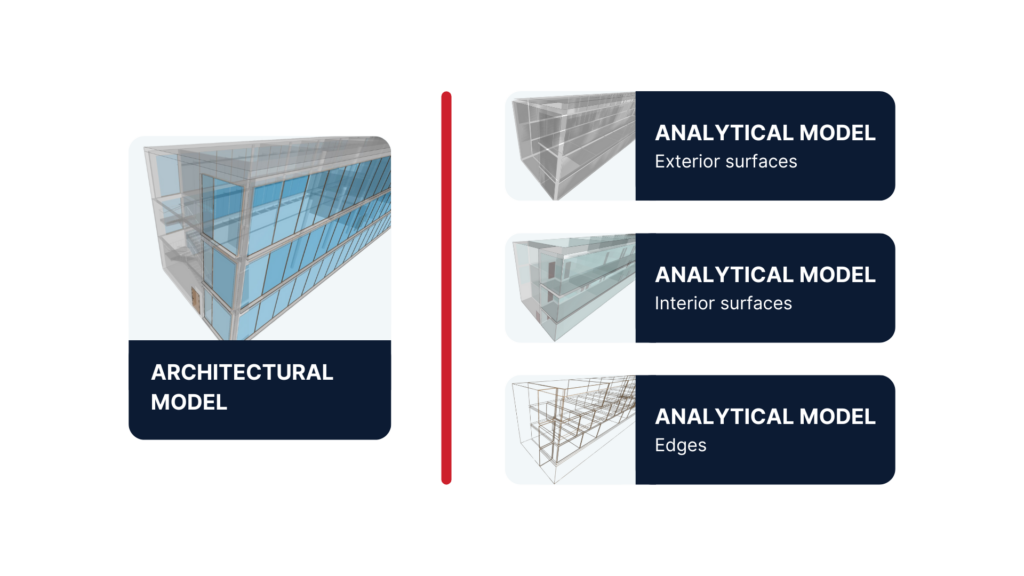
Entering new elements and adjusting imported elements
As well as reading and interpreting information from the IFC model, the program has tools for creating and editing elements. This feature can be very useful if the architectural modelling lacks some essential detail in order to create a quality analytical model. Also, if an error is detected in the characterisation of an element during modelling, the program allows you to refine and update it before starting simulations in other applications.
Downloading on BIMserver.center and connecting to other programs
Open BIM Analytical Model can be downloaded free of charge from our BIMserver.center platform. We recommend using the program as an intermediate step between architectural modelling in tools such as Revit, Allplan, or ArchiCAD and different simulation programs such as AcouBAT by CYPE or CYPETHERM EPlus, among others. In the specific case of interoperability with Autodesk Revit, we recommend consulting the CYPE-Revit Interoperability Guide.
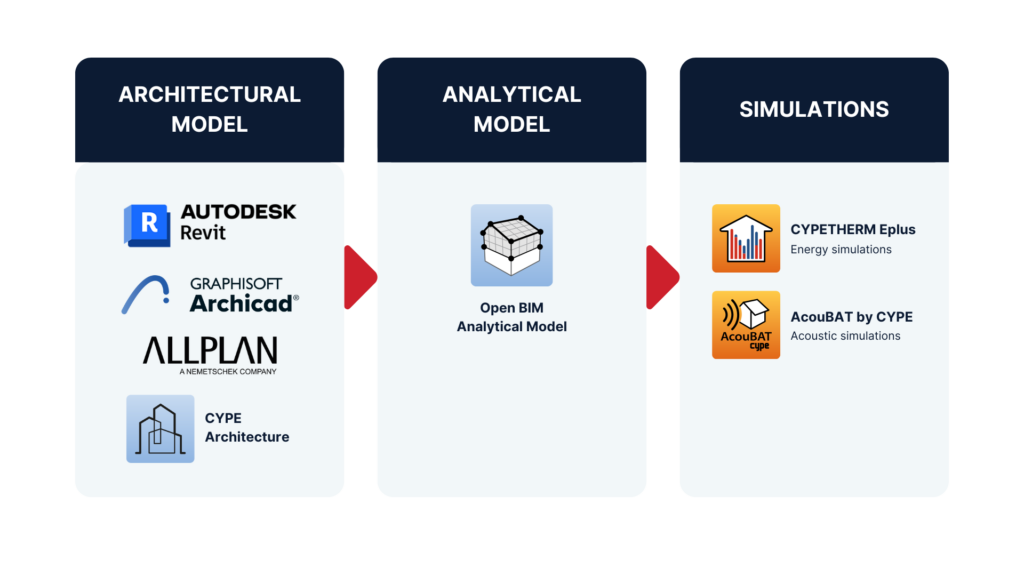
Generating an analytical model in a single click
By preparing the geometric model properly for its export to IFC and using the OpenBIM workflow via the BIMserver.center platform, the program can generate analytical models in a single click.
These features are an important step forward in the integration of BIM processes in energy and acoustic analysis and allow more efficient and accurate simulations to be carried out.

